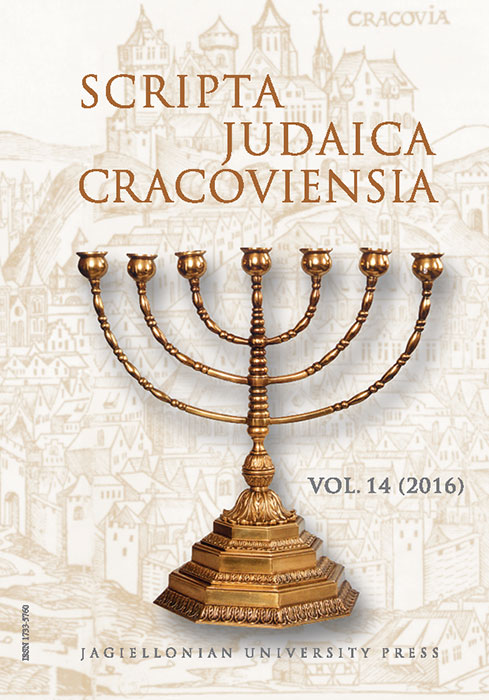The Impact of the Barbarian Invasions on the Jews of Roman Italy: New Perspectives
The Impact of the Barbarian Invasions on the Jews of Roman Italy: New Perspectives
Author(s): Samuele RoccaSubject(s): Social history, Ancient World, History of Judaism
Published by: Wydawnictwo Uniwersytetu Jagiellońskiego
Keywords: Jews; Rome; Late Antique; Venosa; Barbarian invasions
Summary/Abstract: There is no scholarly discussion on the impact of the Barbarian invasions on the Jewish communities of Roman Italy. Roman Italy fell victim to a series of invasions. First the invasion of Alaric’s Visigoths in 410 C.E., and then that of Genseric’s Vandals in 455 C.E., which culminated in the sack of Rome. These were followed by the establishment of the Roman-Barbaric Kingdom of the Ostrogoths, and the subsequent disastrous Gothic War (535-554 C.E.), which brought Italy back under Justinian’s rule. The Barbarian conquest of Italy ended with the Lombard invasion in the second half of the sixth century, around 568 C.E.The purpose of this article, therefore, is to demonstrate that the Barbarian invasions brought profound changes to the geographic distribution and the demographic development of the Jews living in Late Antique Italy. Thus, a close look at epigraphic data shows that the destruction that came in the wake of the Barbarian invasions probably resulted in the total destruction of the various Jewish communities established in northern Italy, and a substantial decrease, even decline in the Jewish population of Rome, sacked twice by the Barbarians during the fifth century, and much damaged by Justinian’s Gothic wars in the middle of the sixth century. On the other hand, it is possible to observe a slow demographic and geographic increase, albeit one that is difficult to measure, of the Jews living in southern Italy. This part of the peninsula suffered much less damage than the rest of the peninsula as a consequence of the Barbarian invasions, as attested in the epigraphic evidence from Venosa. Thus, by the end of the Barbarian invasions, the geographical distribution of the Jewish communities in southern Italy anticipated that of the early Middle Ages, attested in the eighth and ninth centuries C.E.The research leading to these results received funding from the European Research Council under the European Union’s Seventh Framework Programme (FP/2007-2013) / ERC Grant Agreement no. 614 424. It was part of the ERC Judaism and Rome, and was realized within the framework of the CNRS and Aix-Marseille University, UMR 7297 TDMAM (Aix-en-Provence).
Journal: Scripta Judaica Cracoviensia
- Issue Year: 2016
- Issue No: 14
- Page Range: 41-56
- Page Count: 16
- Language: English

